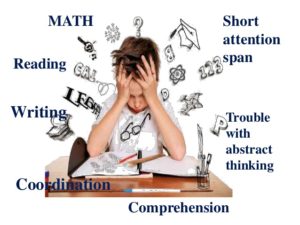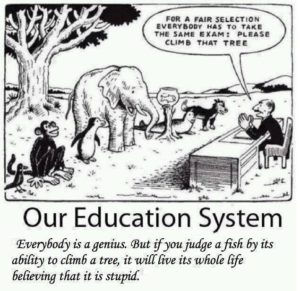
Whether you are a parent or a teacher, no doubt, you are familiar with the phrase “Every Child Can Learn.” It is a powerful statement made mostly by supporters of the education reform movement, and it is designed to shift the burden of student success away from the student and places it square on the shoulders of the teacher. It is a fallacy based on the assertion that every child who enters the classroom is essentially a baby bird, with its mouth opened wide, anxiously waiting to be fed. I’m not disputing the teacher’s role or responsibility, but rather, the weight of that responsibility. Of course, a baby bird’s ability to eat depends on the mother bird’s ability to deliver the worm, but this theory does not take into consideration the birds that fell out of the nest, the birds shunned by the other birds, the birds that don’t know how to eat, and the birds that simply have an aversion to what they are being fed.

The story of how and why I became a teacher would probably require a series of lengthy blogs to explain. I’ll try to summarize. I began teaching at the age of 38, after working a decade and a half in an entirely different field. A series of life events led me to examine a handful of experiences in my early years that more or less shaped who I am. My interaction with the boys who resided at Boy’s Village led me to understand that some children don’t have all of the things that we sometimes take for granted. For example…parents.
Another life changing event was the witnessing of my 5th grade teacher identifying a child of a Taiwanese family, new to the United States, as a special needs child. In the family’s home country, the child was written off as “dumb,” and the older brother had the responsibility of supervising him in the school setting. As it turned out, the child’s inability to communicate effectively and participate in learning was due to his being deaf. That child went on to be world renowned artist, Charlie Huang, and that teacher went on to be superintendent of Calcasieu parish. He continues to be the single largest reason that I became a teacher.
My first year of teaching was the final year of a failed alternative school setting for elementary students. Plans were underway to redesign how the needs of this small, but priority, population of students could be met, more effectively. Until then, one class lacked a teacher. I took the job.
In that first year, I had a grand total of four students; never more than two at a time. For the most part, students rotated in and out. The program was intended to be a temporary setting for students, although it was less temporary, for some. After learning the makeup of my class, most teachers (and people, in general) think that I had it easy, or that it isn’t fair that I had such a light load while they had to teach a class of thirty kids, day in and day out. I can tell you…by no means do I think teaching a full class of students is easy, but it does not compare to being on full alert for eight hours straight with one student who demands 100% of your attention to avert a catastrophe. I was knocked to the floor, flat on my face, by an eight year old who felt the need to swing a desk across my back. That same child burned his family’s home down. I was zapped by a resource officer’s taser while trying to redirect the behavior of a 5th grader who randomly went into a rage, putting everyone in proximity in danger. I learned that a student, not mine, was sleeping on the ground behind the drugstore because he didn’t know where his mother was and he couldn’t get into their house. He didn’t ask for help because he didn’t want to be taken from his mother. These are unbelievable, but very real, scenarios.
 At the end of the school year, that program was closed, and I moved to another school in a classroom for students with emotional disturbances and behavior disorders, where I stayed for 4 1/2 years. Over the course of those years, I had a total of about 12 students; five of those, for three years in a row. At one time, my class roster represented every grade from K-5. Try planning lessons for that class with no planning period, or time to eat lunch in peace and quiet.
At the end of the school year, that program was closed, and I moved to another school in a classroom for students with emotional disturbances and behavior disorders, where I stayed for 4 1/2 years. Over the course of those years, I had a total of about 12 students; five of those, for three years in a row. At one time, my class roster represented every grade from K-5. Try planning lessons for that class with no planning period, or time to eat lunch in peace and quiet.
During that time, I had my brand new personal guitar broken. I had a table with three new computers flipped over destroying all three computers. I had the youngest child ever that a doctor in Calcasieu parish was willing to diagnose as bipolar-schizophrenic. He repeatedly sneaked matches into the classroom attempting to light up the rug. I had an already emotionally unstable student lose his mind when the only sibling he had a relationship with passed away from an undiagnosed heart condition. I had a student who, much like my own son, had Asperger’s Syndrome that wasn’t recognized until he was older. I had a student born to a drug addicted mother who was so friggin’ naturally intelligent, but couldn’t corral the thoughts in his mind long enough to complete a task. And lastly, I watched a student be driven away by child protective services after he confided to me that his father was doing unspeakable, horrific, things to him.
All of those students who I taught in the first five years of my career are now adults, or very close to being an adult. I carry them with me, everywhere I go. I can account for almost all of them. Some of them, I have had a second time in the high school setting. Some of them will live productive and successful lives; others, will not. Two of them are in jail. One is in college and working part-time. One will soon exit high school. And although nothing about his life has ever been easy, the student I watched taken into State’s custody introduced himself to me, at (of all places) my own brother’s wedding, and thanked me for doing what I did.
 About 70%-80% of these students lived in poverty. Only two lived in what would be considered a “traditional family” with a mother and a father. Four lived with one, or both, of their birth parents. Four were being raised by a grandparent, and two lived with adoptive parents. While the students I taught during this short time period represent a very small population of the most extreme cases concentrated into one classroom, I cannot stress enough the importance of acknowledging that these students, with problems ranging from mild to severe, are present in classrooms across every school district in the United States.
About 70%-80% of these students lived in poverty. Only two lived in what would be considered a “traditional family” with a mother and a father. Four lived with one, or both, of their birth parents. Four were being raised by a grandparent, and two lived with adoptive parents. While the students I taught during this short time period represent a very small population of the most extreme cases concentrated into one classroom, I cannot stress enough the importance of acknowledging that these students, with problems ranging from mild to severe, are present in classrooms across every school district in the United States.
Would it surprise anyone to learn that none of these students ever performed exceptionally well on state assessments? As I have looked back at those years, there were times that I have second guessed my decisions, and questioned what the outcome would’ve been if I had made a different decision. I have never felt that I failed my students. What I do question is would I take that same path under the current belief that all children must be held to the same standard, and when a child doesn’t meet that standard, it is the teacher’s fault? The answer is YES, I would, but the reality is, I wouldn’t make it past the second year because of accountability.
When I stand up and speak out, not only for my own children, but for special needs children, I believe that I have earned that right. I have experienced the barriers to achievement in the classroom, at the highest possible level. The current methods of accountability are unfair. It is unfair to teachers. It is unfair to parents. And, most importantly, it is unfair to students. I take offense to being told that my agenda is adult-centered, and I only want to protect the “status-quo.”
At its last general meeting, the Louisiana Board of Elementary and Secondary Education (BESE) voted and agreed to establish a committee to explore alternative ways to hold accountable the schools that serve special populations. This is largely due the continued “F” rating of Louisiana Key Academy (Click Here), despite tremendous successes and parent satisfaction. I think this is a vital step toward acknowledging the fault in the current accountability system. I applaud BESE, for that.
We must, as stakeholders in the educational system, continue to raise our voices and express our concerns. It is important to the survival of public education, which by the way, remains the choice for 80 percent of Louisiana parents.

